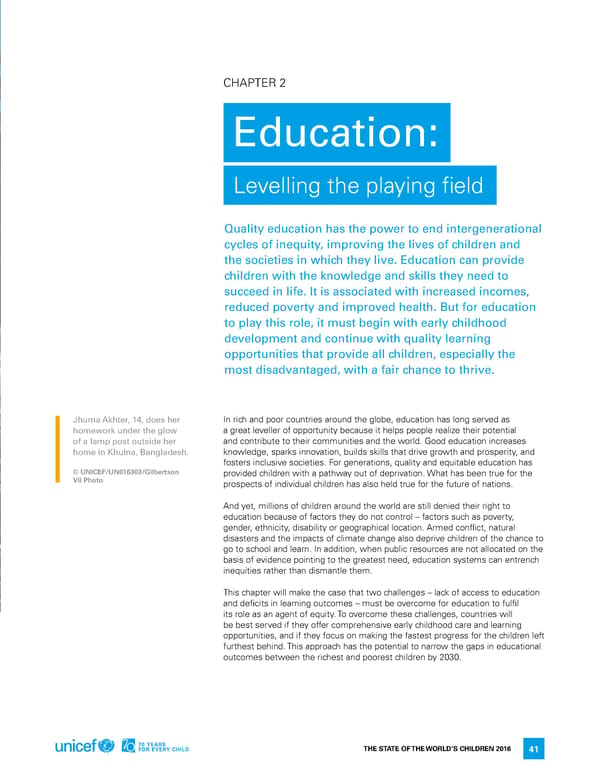ChaPTer 2 Education: levelling the playing field quality education has the power to end intergenerational cycles of inequity, improving the lives of children and the societies in which they live. Education can provide children with the knowledge and skills they need to succeed in life. It is associated with increased incomes, reduced poverty and improved health. But for education to play this role, it must begin with early childhood development and continue with quality learning opportunities that provide all children, especially the most disadvantaged, with a fair chance to thrive. Jhuma Akhter, 14, does her in rich and poor countries around the globe, education has long served as homework under the glow a great leveller of opportunity because it helps people realize their potential of a lamp post outside her and contribute to their communities and the world. Good education increases home in Khulna, Bangladesh. knowledge, sparks innovation, builds skills that drive growth and prosperity, and fosters inclusive societies. for generations, quality and equitable education has © UNICEF/UN016303/Gilbertson provided children with a pathway out of deprivation. What has been true for the vII Photo prospects of individual children has also held true for the future of nations. and yet, millions of children around the world are still denied their right to education because of factors they do not control – factors such as poverty, gender, ethnicity, disability or geographical location. armed conflict, natural disasters and the impacts of climate change also deprive children of the chance to go to school and learn. in addition, when public resources are not allocated on the basis of evidence pointing to the greatest need, education systems can entrench inequities rather than dismantle them. This chapter will make the case that two challenges – lack of access to education and deficits in learning outcomes – must be overcome for education to fulfil its role as an agent of equity. To overcome these challenges, countries will be best served if they offer comprehensive early childhood care and learning opportunities, and if they focus on making the fastest progress for the children left furthest behind. This approach has the potential to narrow the gaps in educational outcomes between the richest and poorest children by 2030. The STaTe of The World’S Children 2016 41
 70 Years for Every Child Page 56 Page 58
70 Years for Every Child Page 56 Page 58